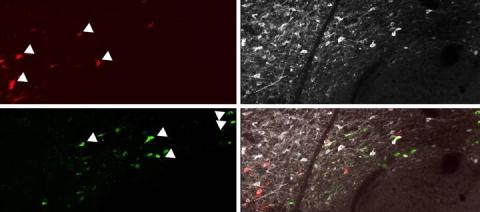Like animals, people develop conditioned responses, especially if strong negative emotions are involved. Millions of people saw the film "Jaws", for example, and remain terrified of sharks even though cows kill more people each year. Over time, the conditioned stimulus (the music in "Jaws") will eventually be dissociated from the fearful experience (watching the movie) but if this "fear extinction" does not happen normally, it can lead to anxiety disorders such as post-traumatic stress or phobias.
In order to understand how the brain regulates both the normal and pathological situations, scientists performed a series of experiments in rats as they extinguished fearful associations. They reasoned that in order for fear to be extinguished, first an animal needs to recognize when an expected fearful event does not happen. As dopamine neurons in some parts of the brain are known to be active when expected unpleasant events don't happen, the team looked at dopamine neurons in a part of the brain called the VTA.

Double retrograde tracer injections into NAc labeled unique populations of mShell (green, lower left) and core (red, upper left) VTA?dopamine neurons (TH labeled, white, upper right). Credit: RIKEN National Science Institute
After conditioning rats to associate a specific sound (think of it as their Jaws music) with an aversive experience (a mild footshock), the team then began the extinction process. As expected, when the sound was played many times without the footshock, rats stopped behaving as if they were afraid of the sound. However, when VTA dopamine neurons were silenced just after playing the sound--exactly when the rats expected their feet to be shocked--they could not unlearn the fear response. This showed that without VTA dopamine activity at that specific time, the mental link between the sound and the shock could not be removed.
But what exactly does the VTA dopamine activity do? Not all VTA dopamine neurons are connected to the same brain regions. Some are connected to brain regions known for their role in storing extinction memories, while others are connected areas related to reward learning. Optogenetics allowed the team to block each of these pathways separately, and they found that they both affected fear extinction, but in opposite ways: blocking the reward pathway prevented fear extinction, while blocking the other pathway enhanced fear extinction.
Now that they have discovered two dopamine pathways that can regulate fear extinction in different ways, the team is working on ways to target these neurons with traditional pharmacology rather than optogenetics.






Comments